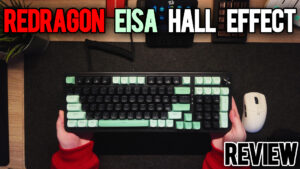Becastled Is What Happens When You Copy Northgard’s Homework at 2AM
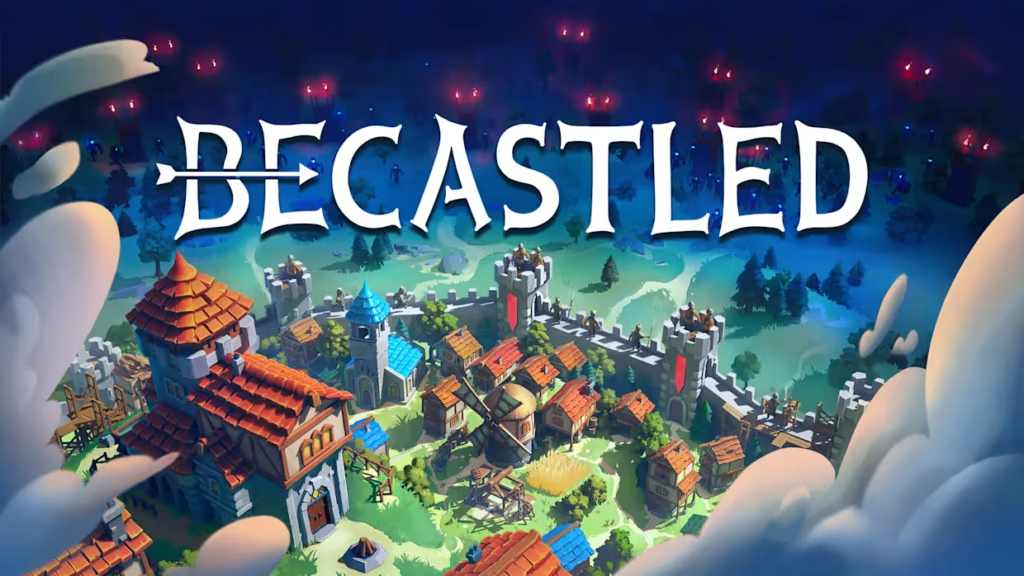
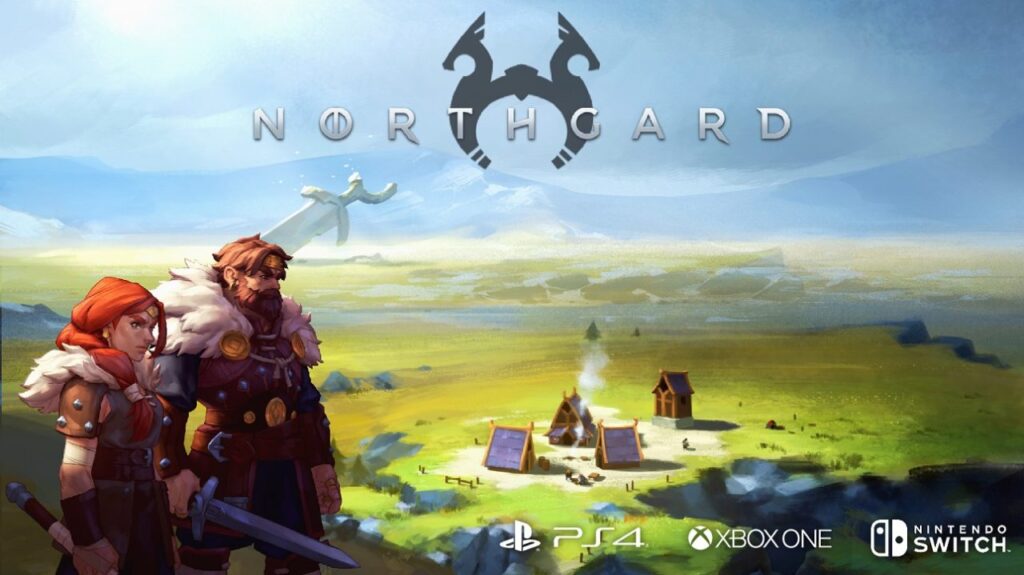

Becastled is a real-time strategy/city-building game that clearly draws inspiration from the acclaimed Northgard. Both games center on establishing a settlement, managing resources, expanding territory, and fending off periodic threats. However, while Northgard delivers a deep and polished experience, Becastled comes off as a shallow imitation. To be fair, some players initially found Becastled relaxing and fun, praising its “nice mix of base builder and tower defence” with a “simple yet appealing” art style and “smooth and fun” gameplay. Yet any early charm quickly fades as Becastled’s lack of depth, polish, strategic nuance, and long-term engagement becomes apparent – especially when directly compared to the more refined Northgard.
Core Gameplay Loop & Depth
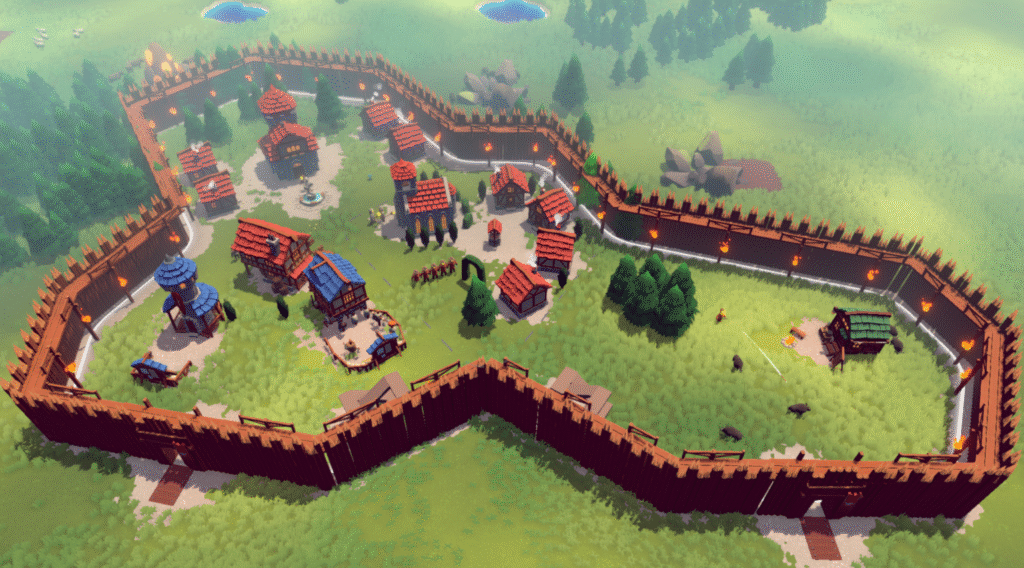
In single-player, Becastled attempts to replicate Northgard’s core gameplay loop of territory expansion, economy building, and survival against enemies. Northgard’s loop involves colonizing zones of a procedurally generated map, managing seasonal effects (like harsh winters), and balancing multiple victory paths (military conquest, lore/technology, trade, etc.). By contrast, Becastled simplifies this formula into a straightforward “build by day, defend by night” routine. Each day you gather resources and construct buildings; each night you must repel an attack. The overall structure feels derivative of Northgard’s survival strategy, but without the same complexity. One Reddit player noted that Becastled’s “‘zone’-based building and unit cap progress is very similar” to Northgard’s, “but it is much more in depth and polished” in Northgard, which is simply “much better” by comparison.
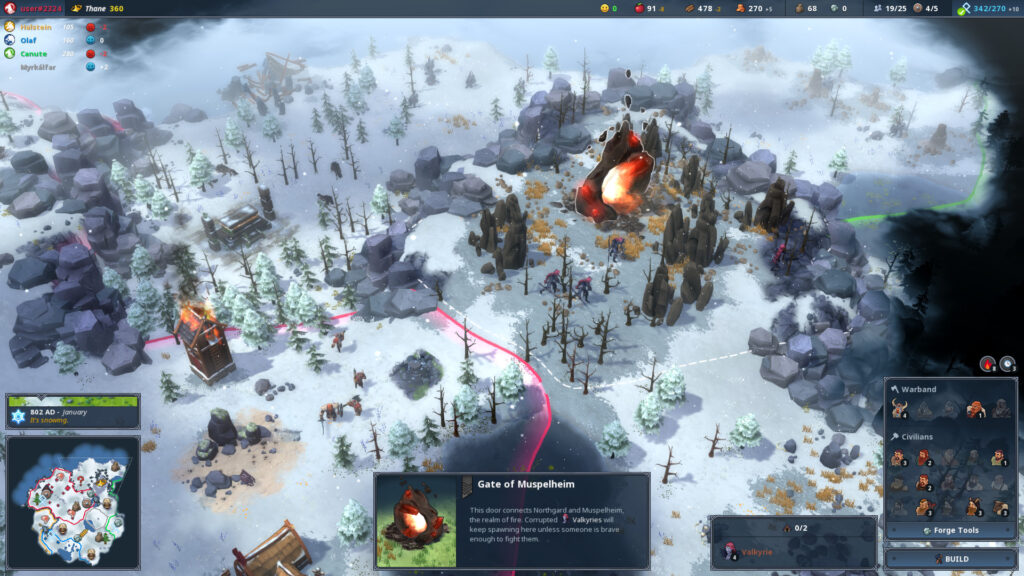
The depth of strategy in Northgard far exceeds that of Becastled. In Northgard, you must carefully plan for winter shortages, diversify food sources, and adjust your strategy to your chosen clan’s strengths. Becastled, on the other hand, strips away these nuanced considerations. Its resource management and build order rarely demand much thought beyond rushing out the basics to survive the next wave. In fact, Becastled’s gameplay is so simplistic that one Steam reviewer reported you can beat its hardest challenge just by executing a fixed build order: “you can beat the hardest level just by memorizing the order that you should build things… After you beat it (which took me under 5 hours to learn how), it’s no fun anymore. It’s just not a challenge.” Mastering Becastled is less about adapting to dynamic conditions and more about rote optimization, which greatly undermines its long-term appeal. Northgard, with its multifaceted strategy, avoids such a one-note solution – you must continually adapt to random events, enemy actions, and resource fluctuations, keeping its gameplay loop engaging far longer.
Combat Mechanics and Unit Control
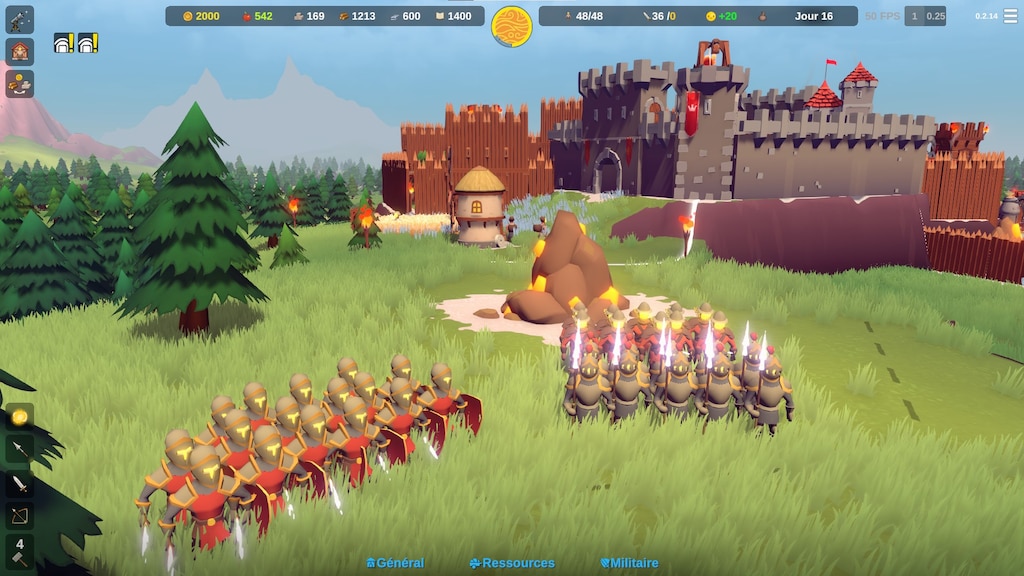
Combat in Becastled is simplistic and lacks the finesse seen in other RTS titles. Each night, enemies charge your walls in predictable waves, and the outcome often boils down to whether you amassed enough archers and soldiers. Unlike Northgard, where combat can involve skirmishes over territory and timing attacks around events (for instance, raiding an opponent before winter hits), Becastled offers little strategic nuance in battle. Unit control is clunky at best – players frequently complain that issuing commands feels unresponsive and that units often behave erratically. There is no tactical pause or formation system, and units don’t always register attack or move orders clearly. As one critic observed, Becastled “isn’t always the best when it comes to commanding your troops,” lacking even basic feedback cues for attack or defend orders. The result is that you often send your soldiers into battle with no indication if they’ll do as told, a far cry from Northgard, where unit movements and engagements are at least reliably executed by the player’s clicks.
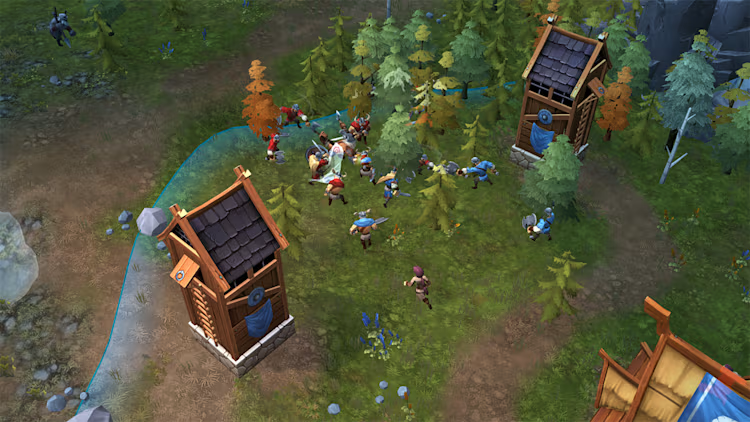
Pathfinding issues further mar Becastled’s combat. Units frequently get stuck or misroute, diminishing any sense of control you might have. For example, positioning archers on castle walls – a cornerstone of Becastled’s defensive combat – is frustratingly awkward. A Steam user describes the pathfinding as “Awful,” noting that if you command a large group of archers to man the walls, they all bumble toward the same ladder: “they will all try to go up the one stairwell… slowing down the entire group” and many “get stuck” instead of taking alternate routes. The player is forced to micromanage small handfuls of units at a time to compensate for the poor AI pathing. Similarly, other players report not being able to properly direct their troops at all – soldiers sometimes stand around idle with “their thumb up their ass” while the base is overrun because you “can’t command troops to fight or do anything” meaningful in the heat of battle. In Northgard, by comparison, unit AI and pathfinding are far more reliable; you can split forces or retreat injured units with reasonable precision. Northgard’s combat also incorporates mixed unit types (melee, ranged, defensive shield-bearers, etc.), making positioning and target priority matter. Becastled lacks these layers – you mostly spam a single type of ranged and melee unit and watch them collide with the oncoming hordes. Combined with its pathfinding bugs, Becastled’s combat often feels unpolished and unsatisfying, more of a chore than a test of strategy.
Unit Variety and Faction Diversity
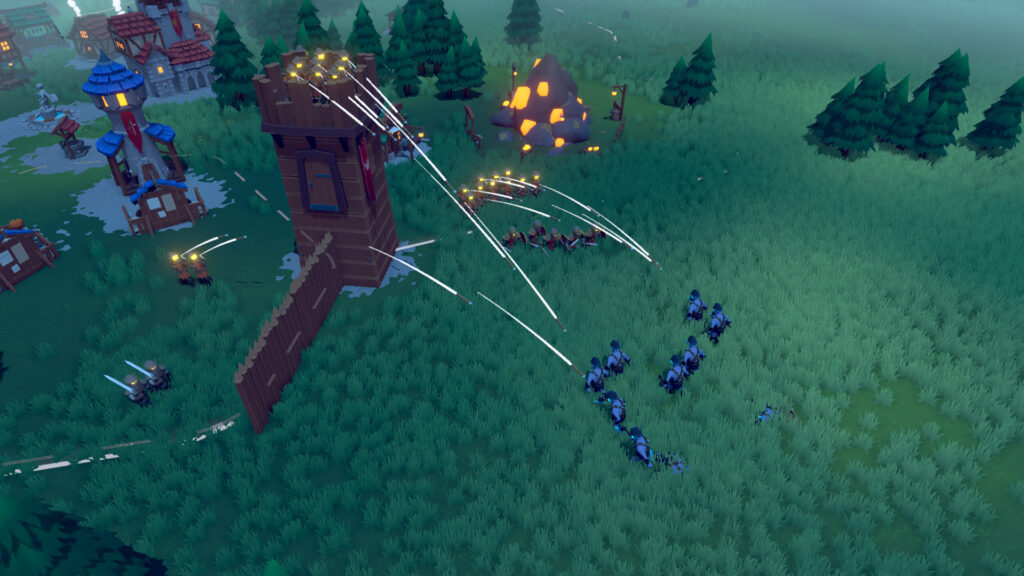
One of Northgard’s greatest strengths is the variety in playable factions (clans) and units. Each clan in Northgard has unique bonuses and sometimes unique units or spells, encouraging different strategies and giving the game high replay value. Even within a match, you can train several unit types – warriors, shield-bearers, axe throwers, healers, loremasters, etc. – each serving a role. In stark contrast, Becastled features only a single faction (the human “Sun Kingdom”) and a very limited roster of units. There are a few basic military units (e.g. swordsmen and archers, perhaps a cavalry knight or catapult at best), and no distinct sub-factions or classes to shake up gameplay. This means every playthrough of Becastled unfolds the same way in terms of units available, whereas Northgard can play very differently depending on your clan choice and unit composition.
Players have been quick to notice Becastled’s meager unit and building variety. One user flatly stated that “there is [a] low amount of soldiers and buildings as of now” in the game. Another commenter who went to try Northgard after Becastled remarked that Becastled is “a much watered down and simpler version” of those older strategy games, to the point that “they’d have to triple the amount of content to come close” to matching either Northgard or even the castle-builder Kingdoms and Castles. This lack of content is evident in how quickly you’ll see everything Becastled has to offer – there just aren’t many different unit types or structures to experiment with. By contrast, Northgard not only has more unit types but also more tech upgrades and special units per clan (like the Bannermen or military buffs unique to each clan). The richness of Northgard’s roster enables more strategic diversity – e.g. choosing to rush with aggressive units versus turtling with defensive ones – which Becastled’s sparse lineup simply cannot replicate.
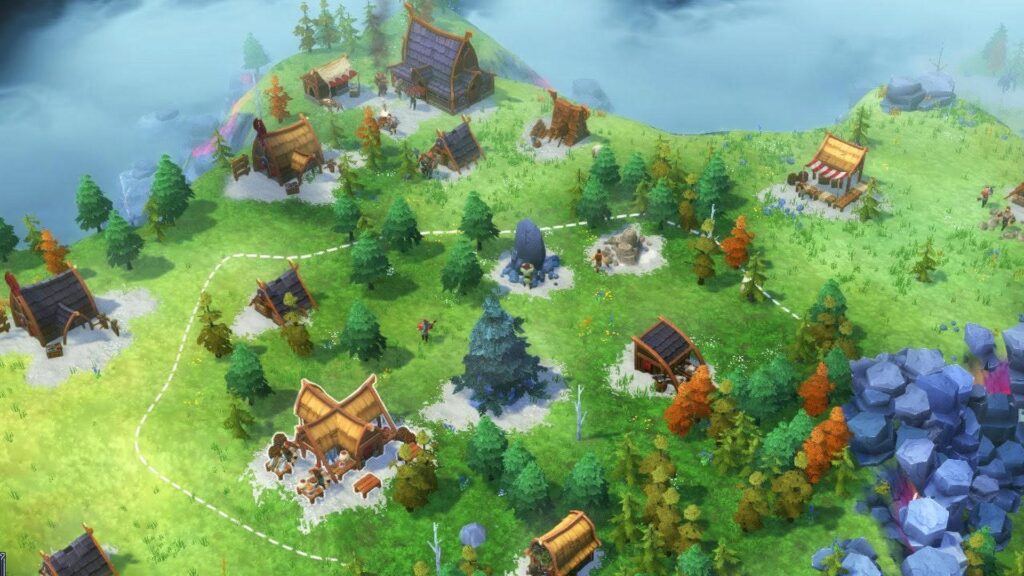
Furthermore, Becastled currently lacks any alternative factions or asymmetry. In Northgard, facing different clans (whether AI or other players) forces you to adapt – each clan might favor distinct strategies or have particular strengths (for example, the Wolf clan excels in early aggression, the Goat clan in sustaining large populations, etc.). Becastled’s enemies, the “Moon” monsters, are generic and have no comparable depth; and since you cannot play as any side but the humans, there’s no faction diversity in gameplay. This one-dimensional design severely limits Becastled’s appeal once the initial novelty wears off. The game essentially copies the broad strokes of Northgard’s unit and building systems but fails to color in any interesting details, leaving a skeletal framework with too few options to keep strategy fans engaged.
Economy and City-Building Management
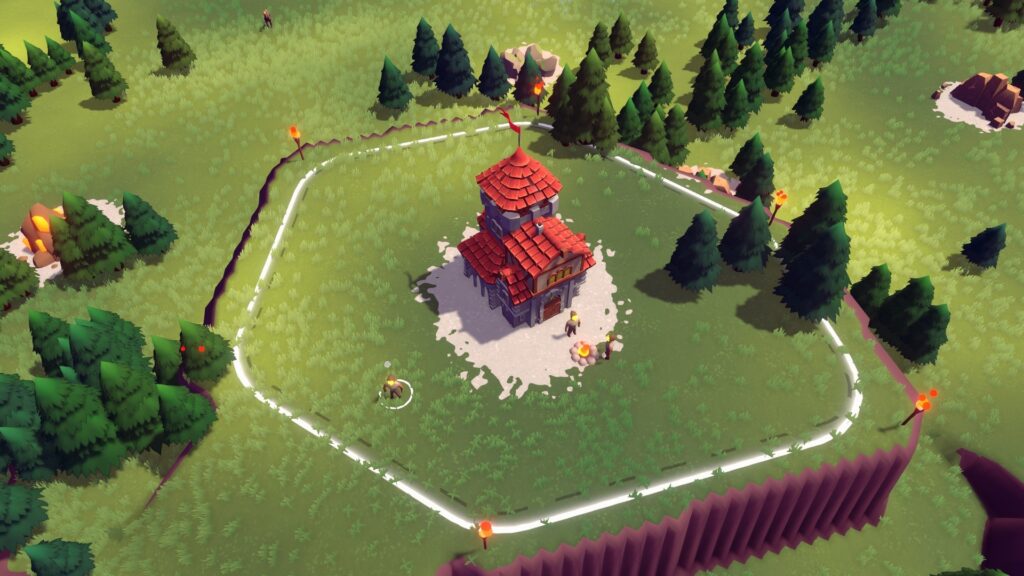
Economic management in Northgard is an engaging balancing act – you juggle multiple resources (food, wood, gold “krowns”, stone, iron, lore) and must plan ahead for winter when food production drops. Expanding your territory in Northgard costs food, requiring you to grow gradually and strategically. You also have to keep your clan’s happiness up to allow population growth, which means constructing breweries or organizing feasts. All these systems interlock to create a challenging city-building experience where mismanagement can lead to starvation or stagnation.
Becastled simplifies or omits most of these economic nuances. Its resource list is much shorter (primarily wood, food, stone, and a currency like sunstone), and their interactions are straightforward. There is no seasonal cycle affecting production – daytime is always for building and harvesting, and nighttime pauses most production while you defend (but there’s no winter famine equivalent). Managing Becastled’s economy often feels trivial: once you assign enough workers to each resource, you’ll generally have what you need, and there are fewer resource types to worry about. Territory expansion in Becastled is present (you purchase adjacent land tiles to expand your kingdom), mimicking Northgard’s zone-based expansion, but without the same tension or cost/benefit considerations. In Northgard, each new zone you colonize not only costs precious food but also must be defended and maintained; in Becastled, expanding is more of an inevitability as you carve out more space to build, with little downside apart from spending some resources. One player managed to buy up the entire map in Becastled and observed that after you do so and ring it with walls, “not much else [is] to do once you get the gameplay and basically win the game.” This underscores how Becastled’s economic and expansion systems lack the ongoing challenge found in Northgard.
Becastled does include a happiness meter for your populace, but here too the implementation is shallow. In Northgard, low happiness will stall your growth and you must invest in breweries or improve villagers’ living conditions – a meaningful mechanic. Becastled’s take on happiness is far easier to game: as one reviewer noted with disdain, you can raise mood simply by “spamming the same silly bushes” as decorations. Rather than providing interesting city-building choices, Becastled reduces happiness to a perfunctory chore of plopping down repeated decorative shrubs to keep villagers content. This kind of design highlights the lack of polish in Becastled’s city-building. Tooltips and building descriptions are also underdetailed, leaving players unsure of what certain structures even do. By contrast, Northgard’s interface clearly communicates building functions and upgrade benefits, and its economy presents tough choices (e.g. sacrifice lore research to develop trade for more gold, or sacrifice short-term growth to stockpile food for winter).
In short, Becastled’s economy is an oversimplified version of Northgard’s. It gets the basic idea of a Viking-like settlement builder (manage resources, expand territory, mind the happiness of your people), but fails to introduce any wrinkles that might make those tasks truly strategic. Once your village reaches a certain self-sustaining point in Becastled, there’s little else to manage or optimize – whereas Northgard continuously forces you to adapt your economy to new conditions (seasons, upgrades, rival actions). This fundamental lack of economic depth in Becastled means city-building enthusiasts will find it lacks the rewarding complexity that Northgard and similar games offer.
Enemy AI and Challenge Level
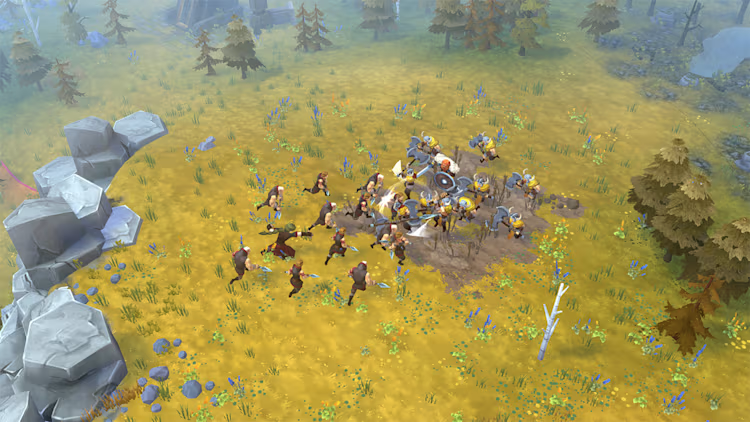
Perhaps the most glaring difference between Becastled and Northgard is in the challenge presented by the enemy AI (artificial intelligence) and the overall difficulty curve. Northgard can be played against relatively competent AI opponents (or other players) who compete for territory, launch raids, and punish your mistakes. It also throws environmental challenges at you – wolves and draugr to clear out, earthquakes that damage buildings, and the ever-looming winter that can turn a bad situation into a catastrophe. These factors keep the player on their toes. By contrast, Becastled relies on a single, very scripted threat: nightly waves of “moon” monsters that charge at your base. There are no rival kingdoms to contend with, no diverse objectives – just defend until you eventually overwhelm the attackers or they overwhelm you. Initially this tower-defense style concept can be fun, but the AI controlling these waves is extremely basic and quickly becomes boringly predictable. Every night the enemies get a bit more numerous, but their behavior never evolves. They mindlessly rush the nearest walls and towers, making no real attempt at strategy.
The simplicity of Becastled’s enemy AI severely undercuts its long-term challenge. Many players have reported that the AI frequently bugs out or simply stops working correctly. For example, one user encountered a game-breaking bug where “after a certain amount of time, the AI stops working and just doesn’t attack” at all. In that situation, you literally have to sally out of your castle to find the stuck enemies because they won’t advance – essentially halting the game’s core loop. Another player similarly noted that the enemy AI tends to glitch through walls or get stuck, which undermines the whole point of carefully building defenses. Such issues reflect a lack of polish; instead of challenging you fairly, Becastled’s AI often fails to function, or conversely, behaves so simplistically that it poses no real threat beyond raw numbers.
Even when functioning as intended, the enemy AI in Becastled fails to demand much strategic adjustment from the player. The waves attack from a highlighted direction each night, so you always know where to concentrate defenses. Unlike Northgard’s AI opponents (which might feint attacks or exploit a weakly defended flank if you overextend), Becastled’s mobs just slam into the front door. One Steam review lamented that the lack of smart AI and the absence of multiplayer make Becastled far too easy: “the AI is extremely simplistic… Right now it’s too easy and missing a lot of content.” In fact, without multiplayer, there’s no way to introduce a human element to the combat – you will never face anything other than the static AI waves. This means once you’ve discovered a winning formula (e.g. build X archers by Day 5, Y walls by Day 10, etc.), Becastled offers no further challenge or variation. Several players report beating all the content Becastled currently offers in mere hours. On the hardest difficulty, once you figure out the optimal build and defense pattern, the enemies remain too dumb and predictable to throw you any curveballs. As one disappointed player concluded, after a short while Becastled is “just not a challenge” for an experienced RTS player.
By contrast, Northgard can keep even seasoned strategy gamers challenged thanks to its smarter AI and dynamic elements. High-level Northgard AI will pressure you on multiple fronts, and the game’s design ensures you’re never in a static routine – if it’s not enemy clans attacking, it’s a sudden famine or a pack of wolves in your newly acquired province. Nothing of this sort exists in Becastled, which makes its single-player experience much more shallow. The lack of an AI opponent building its own base (there is no equivalent of a competing faction to raid or be raided by) means Becastled misses an entire dimension of RTS gameplay that Northgard has. One user suggested a massive change – “maybe change it so the enemy [build] their own castles and we can attack them?” – as a way to extend playability. But as it stands, Becastled offers no such complexity; the onus is always on the player to defend, never to strategize offensively or react to a cunning enemy plan. The result is that Becastled’s challenge is hollow – it may stress your clicking ability to churn out troops fast enough, but it rarely tests your strategic thinking the way Northgard does.
Map Design and Environmental Features
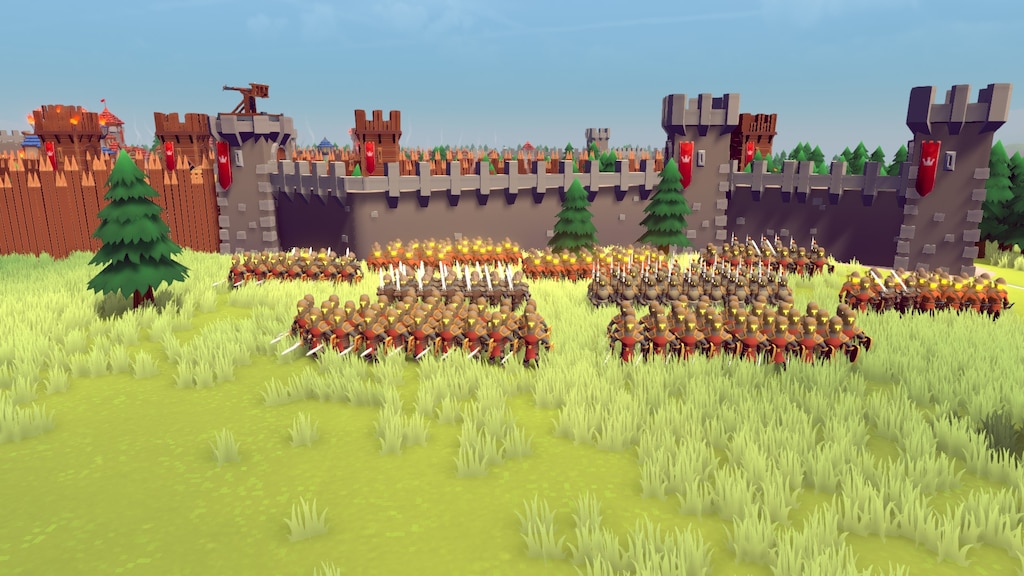
The differences in map design between the two games also highlight Becastled’s lack of ambition. Northgard features procedurally generated maps with distinct biomes (forests, swamps, tundra, etc.) that affect gameplay – for instance, forests provide extra wood but might house wolves, fishing areas allow food production at sea, and so on. Each tile or territory in Northgard feels purposeful, and exploring the map is rewarding because you might discover useful neutral factions (like merchants or mythical creatures) or valuable landmarks that confer bonuses. The environment itself is an important character in Northgard, with day/night cycles and seasonal changes (winter snow covers the map, slowing your units and reducing yields). All these elements give Northgard’s world a rich, dynamic quality and directly influence strategy.
Becastled’s maps, by comparison, are *bland and repetitive. The game uses a hexagonal grid for territory, and maps are randomly generated, but they largely look and play the same. The art style is colorful and cute, but beyond aesthetics there’s little to differentiate one map from the next. You’ll see rolling green hills and scattered resource nodes (trees, stone, animals) – no distinct biomes or special landmarks of note. There are also no environmental hazards or events to contend with. Day and night alternate, but unlike Northgard’s winters, Becastled’s night cycle only triggers the enemy attack and then immediately flips back to a consequence-free daytime once you win. There’s no weather, no creeping darkness effects – just a visual change in lighting. A Reddit user from the demo period commented that Becastled “checks a lot of boxes” with its cartoony, hex-based map and wave-defense hook, “but it also doesn’t do anything unique” to stand out in the genre. This sentiment perfectly captures the issue: Becastled’s map design feels like a shallow copy of Northgard’s territorial system without any unique twist or innovation of its own.
Moreover, because Becastled lacks a campaign or set scenarios, there are no crafted maps with specific challenges. Northgard, for instance, has a story campaign where certain missions feature scripted map events (like surviving an endless winter or dealing with a giant beast on the map) that force you to play differently. Becastled currently offers only the random skirmish mode where you survive as many days as possible on a generic map. This further contributes to a sense of monotony in Becastled’s experience – once you’ve seen one map, you’ve essentially seen them all, aside from minor random layouts. Players quickly realized that expanding in Becastled requires no special adaptation to map features: “I have managed to purchase all tiles on [the] map… Not much else to do” once you’ve expanded fullyeprison.de. The terrain presents no real obstacles or strategic geography; it’s just an open canvas to build on until it’s filled. In contrast, Northgard’s maps have choke points, limited fertile lands, and dangerous zones that you might choose to avoid or rush for, giving each map a strategic puzzle-like quality. None of that exists in Becastled, which treats the map as a simple backdrop for the wave defense gameplay.
In summary, Becastled’s map and environmental design do little to enrich its gameplay. They serve as a functional but uninspired stage for the cycle of build/defend, whereas Northgard’s maps actively engage the player with meaningful variety and challenges. The lack of environmental depth in Becastled is another reason it fails to sustain interest, especially for players coming from the more richly designed world of Northgard.
Progression and Replayability
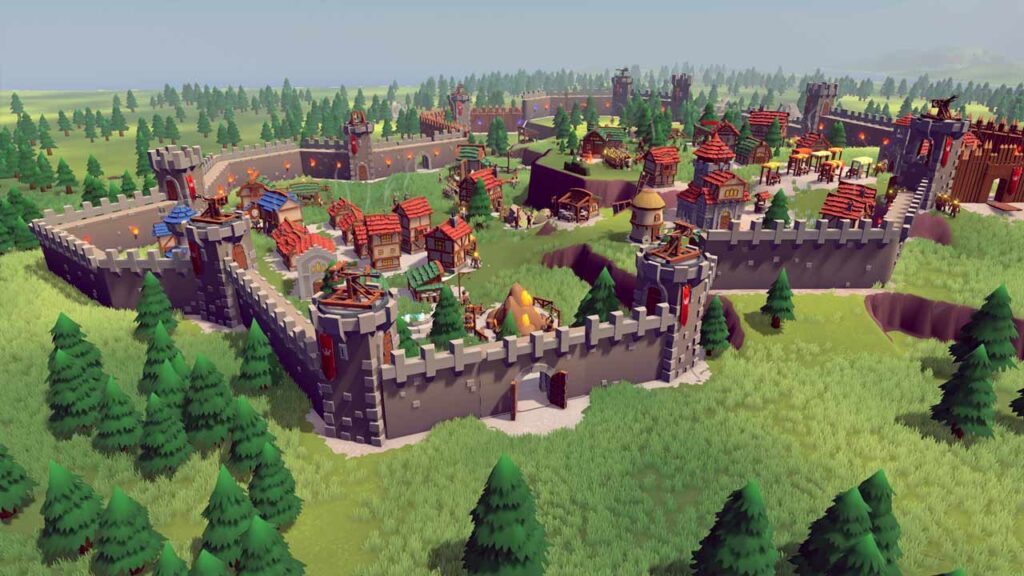
Finally, when it comes to progression systems and long-term engagement, Becastled falls dramatically short of Northgard. Northgard provides multiple layers of progression that keep players invested: a tech tree (Lore) to research economic and military upgrades during each game, multiple victory conditions to pursue (encouraging different playstyles), and meta-progress in the form of a campaign storyline and numerous clans to try out. It also features full multiplayer, letting players compete or cooperate, which adds infinite replayability as you refine strategies against real opponents. On top of that, Northgard has seen regular updates and expansions (new clans, units, and modes like Ragnarok or Conquest) that continually expand its content.
Becastled, especially in its current state, has none of these robust progression elements. There is no single-player campaign or narrative mode (no story-based missions or unique objectives) – only a sandbox survival mode that resets each game. There are no alternate victory conditions or goals; survival/endless defense is the only scenario, so once you’ve survived the maximum on one map, doing it again on another map feels identical. There is also no tech research tree equivalent to Northgard’s lore system. Becastled does allow upgrading certain buildings (e.g. reinforcing walls from wood to stone), but these are straightforward linear upgrades, not branching technologies that significantly change your strategy. The absence of a tech tree means there’s less mid-game progression – by the late-game of Becastled, you’re doing the same things you did in early-game, just with bigger numbers. Northgard, by contrast, has you unlocking new perks throughout a match (which can shift your focus, e.g. improving military power vs. boosting economy as needed).
Most critically, Becastled launched (and even as of its full release) without any multiplayer mode. This is a huge blow to replayability. In an RTS/city-builder hybrid like these, human competition can greatly extend the game’s life – once you’ve mastered the AI, testing your skill against other players is the next compelling step. Northgard offers online multiplayer and co-op modes, whereas Becastled is strictly solo, fighting brainless waves. One Steam reviewer pointed out that the lack of multiplayer in Becastled means “it would actually require you to use some strategy” if it were added, because the current AI is too easy. In other words, seasoned players find Becastled devoid of strategic challenge once the pattern is learned, and without multiplayer there’s no way to seek a greater challenge. This severely limits Becastled’s longevity – many people tire of it after a few sessions. Users commonly report that repetition sets in quickly. “Fun little game… but you can’t play too many rounds before it gets repetitive,” one owner wrote, noting that even though the game can be “super fun” initially, “it will get repetitive really quick” and you’ll exhaust its content within a “few hours” or a few days of play. Another player quantified Becastled’s content bluntly: “Fun game, but only five hours of playtime” before there’s nothing new to experience. Five hours is about what it takes to see everything – a damning indictment for a strategy game, especially compared to Northgard, which players can enjoy for hundreds of hours due to its richer systems and variety.
The developers of Becastled have described it as “cozy-meets-challenging,” and indeed it has a casual, accessible vibe. But that coziness comes at the cost of depth. The game currently doesn’t offer challenge modes, difficulty modifiers beyond basic settings, or any form of meta-progression to keep players hooked. Once you’ve beaten the highest difficulty wave or built the biggest castle, Becastled provides no further goals or incentives to continue. Northgard, on the other hand, provides a sense of progression even outside of matches – you can always try a harder difficulty, a different clan, complete the next campaign chapter, or play online to truly test your skill. Becastled’s lack of these features makes it feel more like a short-lived diversion than a game you can sink your teeth into for the long haul.
Buy or Skip?
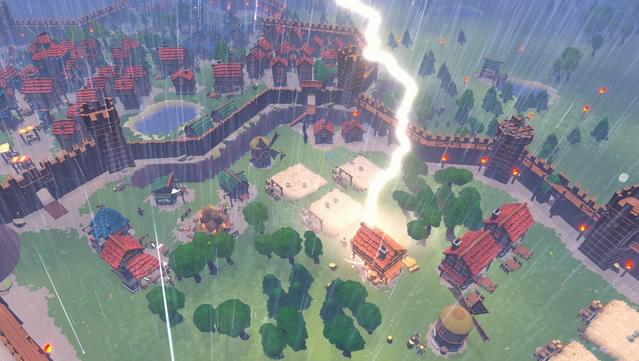
In the end, Becastled comes across as an unsophisticated imitator of Northgard’s formula. It borrows the surface elements – cartoonish Viking-esque village building, territorial expansion, and survival against hostile forces – but fails to replicate the depth and polish that made Northgard a stand-out title. Where Northgard is rich in strategic nuance, Becastled is simplistic and easy; where Northgard is polished and content-rich, Becastled remains rough-edged and thin. The result is a game that might entertain briefly, but lacks the staying power of its inspiration. As one Reddit user quipped after trying Becastled, you’re better off saving your money for Northgard, which “looks much better”. Even players who enjoyed Becastled in short bursts acknowledge its shortcomings and hold out hope that it will “get more fleshed out” in time. But until then, Becastled is difficult to recommend to anyone seeking the kind of deep, replayable RTS/city-building experience that Northgard delivers. Becastled may wear Northgard’s cape, but it doesn’t have Northgard’s soul – it’s a pale shadow in comparison, offering mere hours of mildly amusing castle defense where Northgard offers a lasting saga of Viking strategy. The verdict is clear: when it comes to depth, strategy, and longevity, Becastled simply cannot castle-up to Northgard.



